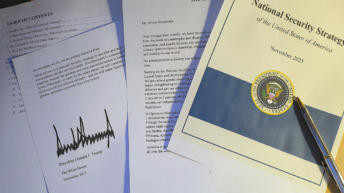
In the last decade, the rise of China as a global power, both in terms of its economy and its interference around the world, has made countries conscious of its presence and has alarmed them regarding its expansionist policies; China’s rise must be understood through the dual lens of its territorial assertions and also through the evolution of its economic policies, particularly since Xi Jinping’s ascension to power. When Xi, the current ruling president of the People’s Republic of China (PRC) and the general secretary of the Communist Party of China (CPC or CCP), came to power on 14 March 2013, he brought a dynamic set of foreign and domestic policies to reshape China’s economy. Xi’s approach, compared to his predecessor, Hu Jintao, has been more aggressive and expansionist, focusing on using economic means to pursue his longer-term security goals. To deeply analyse the growth trajectory of China, it is crucial to highlight the foundation of China’s monetary gamble and the strategic vision of Xi’s evolving economic statecraft.
Dragon’s Strategy: The Rise of China’s Economic Statecraft Under Xi Jinping
Xi envisions China not as a developing nation but as Asia’s global stalwart. China follows up with its declarations of being Asia’s principal representative by building ‘infrastructure and partnerships’ with various countries in the South China Sea (SCS) and the East China Sea (ECS). The export sector constitutes a critical pillar of any emerging economy. For China to advance its economic ambitions and solidify its position as a global manufacturing hub, it must strategically navigate the constraints imposed by Washington’s tariff regime. This challenge has prompted the adoption of its export-oriented industrial strategy. The proposed plan of ‘Dual circulation,’ first introduced in May 2020 to tackle the coronavirus pandemic, seeks to leverage the dual forces of domestic and international demand while underscoring the need for China’s domestic industry to make itself independent while advancing worldwide.
China has numerous structural issues that have aggravated the country’s economic crisis: mounting public debt, demographic decline, and deflation, which have limited its growth potential, all of which threaten the long-term sustainability of its economic model. A declining marriage rate and birth rate, exacerbated by decades of the One Child Policy, have led to a shrinking workforce and mounting pressure on social services due to an aging population. Simultaneously, China’s actual debt burden may be far higher than reported, as the state acts as both borrower and lender by controlling banks, construction firms, and pension funds. The country is also grappling with persistent deflation in wholesale prices and assets, particularly in real estate and equities, dampening private investment and economic growth. To counter these issues, China initiated the ‘Three-Step’ strategy under its “Made in China 2025” (中国制造2025) policy initiative for the ambition of transforming the country into a global manufacturing powerhouse by 2049. The primary focus of this policy is on localising R&D, reducing reliance on foreign technology, and capturing market share across ten high-tech industries through localization, indigenization, and substitution.
The Trade Tempest: US-China Economic Tussle and its Global Implications
The ongoing rivalry between the United States (US) and China has emerged as a competition in trade, technology, and global influence, with significant implications for everyone. Starting with reshaping global supply chains as the U.S. pushes for “friend-shoring” and decoupling strategic industries such as semiconductors, green technology, and rare earth, the MNCs based in the U.S. are redirecting billions in investment away from China toward alternative markets.
The friction between the two countries emerged during President Trump’s first term, when, in 2018, America imposed tariffs on China’s imports because it accused China of intellectual property theft, forced technology transfer, and unfair trade practices. Even though strategists from various countries thought the tensions might ease with the “phase one” trade deal signed in 2020, the trade relations between China and the US remain full of complexities. One notable consequence of this highly volatile relationship between the US and China is that the technology and manufacturing sectors have sought to diversify their supply sources to mitigate the impacts of tariffs.
As rising competition mounted, it became a “Tech Cold War,” with the US trying to choke off China’s access to advanced technology. Central to this slugfest is the CHIPS and Science Act (2022), which allocates roughly $52 billion to revitalize U.S. chip manufacturing and insinuates “guardrail” provisions that forbid subsidy recipients from expanding advanced semiconductor capacity in China for a decade. Huawei and other Chinese tech enterprises were sanctioned as the US denied them strategic inputs like semiconductors and electronic design automation (EDA) software. Beijing retaliated by accelerating the push towards technological independence, going all out for domestic R&D and developing indigenous alternatives. Though this has been attempted, the problems exist primarily in achieving parity in chip fabrication and producing high-end chips. Confronted with greater uncertainty and cost, MNCs have been operating a ‘China +1’ strategy, diversifying their manufacturing hubs to Vietnam, India, and Mexico. However, China’s in-depth integration with global supply chains makes complete decoupling impossible and riddled with barriers. States are striking a balance between economic interests and strategic relations, frequently trapped between the rival pulls of the United States and China.
Implications for India and Recommendations
India, being a nation cloxsely tied with both the US and China through trade, investment, and strategic interests, finds itself in a dilemma regarding its economic cooperation with its land neighbour, China, and its technological alignment with the United States. This tightrope that has put India in a spot to choose sides has forced New Delhi to navigate between competing expectations. India’s interaction with the U.S. and China places it in a delicate balancing act. The legal and policy consequences of opportunistic trade arrangements must be weighed carefully against strategic long-term alliances. Furthermore, India’s export sectors, such as auto parts and chemicals, are vulnerable to retaliatory tariffs and shifting global demand. Crucially, India’s significant import reliance on China, particularly for critical inputs like Active Pharmaceutical Ingredients (APIs) and electronics, contributes to a widening trade deficit, which reached nearly $100 billion in FY 2024-25, up from $85.08 billion in FY 2023-24.
India must start investing in export-oriented infrastructure to capitalise on potential supply chain realignments and enhance its domestic competitiveness, particularly in China’s dominant sectors. This includes accelerating projects like Dedicated Freight Corridors (DFCs) and improving multi-modal logistics to reduce costs and transit times, with initiatives like the PM Gati Shakti National Master Plan aiming to cut logistics costs from 13-14% of GDP to 8-9%. Vigorously implementing Production Linked Incentive (PLI) schemes is vital to boost domestic manufacturing and reduce import dependency; these schemes have already attracted investments exceeding $19 billion (Rs 1.61 lakh crore) and generated production valued at over $198 billion (Rs 16.5 lakh crore) India must also pursue a calibrated trade diplomacy while strengthening its trade ties, especially with ASEAN, the European Union (EU), the Eurasian Economic Union, Latin American and African nations, to cushion external shocks. Positioning itself as a reliable “friend-shoring” destination, a targeted focus on technology transfers, increasing R&D spending (currently around 0.65% of GDP), R&D incentives, and ease-of-doing-business reforms (addressing regulatory complexity and land acquisition challenges) can amplify India’s attractiveness as an alternative manufacturing hub.
The unfolding dynamics under the ongoing trade war between the USA and China has disproved the liberal axiom that economic interdependence helps alleviate political distrust, and evinces a heightened security dilemma between the two countries as shown by the rising strategic concerns in the SCS, and the evolving Indo- Pacific security architecture.






Add comment